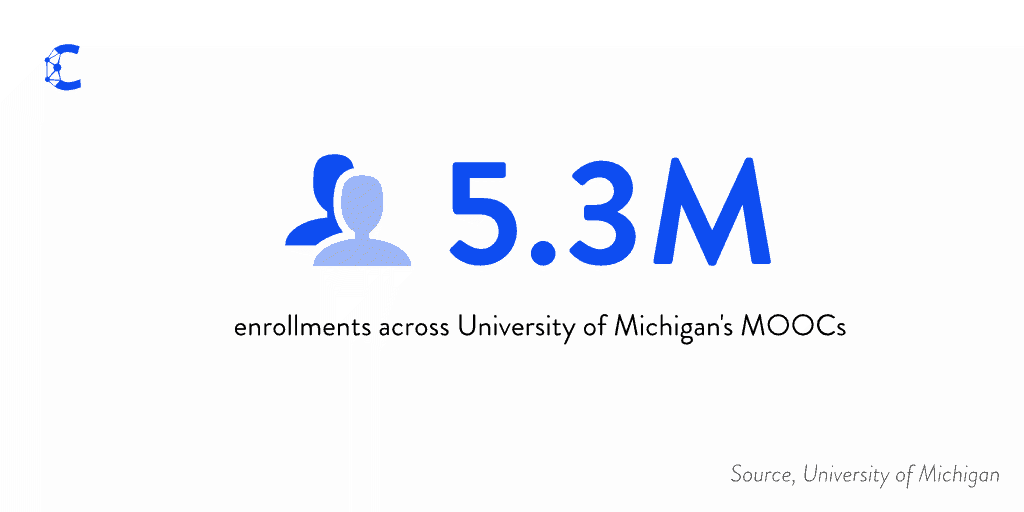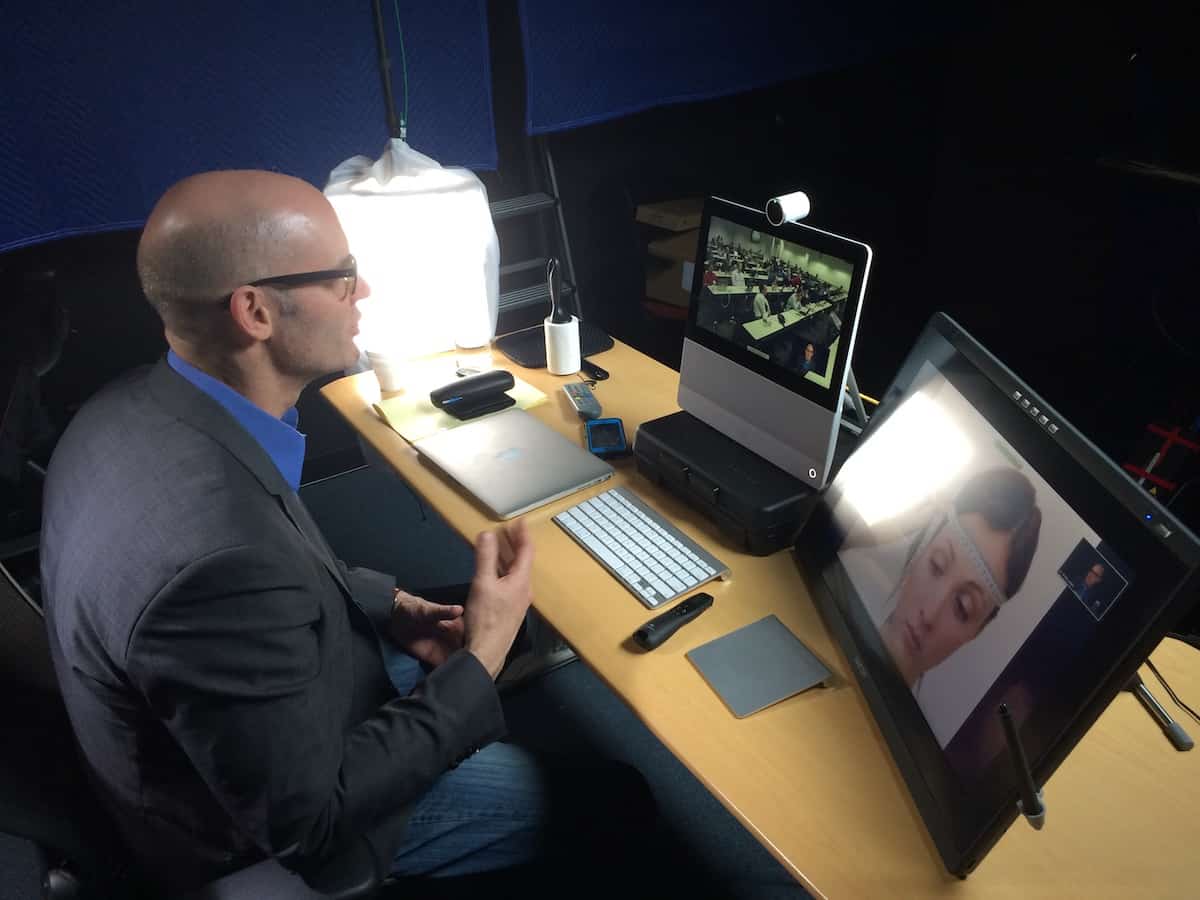The University of Michigan Bets Big on MOOCs, Crosses Five Million Enrollments
Over 250 of the university’s employees have been involved in producing its MOOCs
Earlier this year, the University of Michigan (U of M) announced an ambitious goal of transforming 200 of its on-campus courses by the end of 2017. I recently spoke with James DeVaney, who’s at the head of the university’s online efforts, to see what U of M has accomplished in the field of Massive Open Online Courses (MOOCs), and to hear about the plans for 2017.
The University of Michigan has produced 82 MOOCs as of December 2016. This number includes 49 MOOCs on the Coursera platform and 33 on the edX platform. An additional fourteen U of M MOOCs have been approved, but they have yet to be released/opened on a platform. As of December 2016, enrollments in the University of Michigan’s MOOCs stand at 5.3 million learners. Over 250 of the university’s employees (faculty, designers, administrators, etc.) have been involved in producing its MOOCs.
James DeVaney, the Associate Vice Provost for Academic Innovation, told me that the University of Michigan has incorporated a number of MOOCs on campus. For example, its public health MOOC is being used by its medical and dental students. James explained that the university’s MOOCs are designed from the start to enhance and personalize both global and on-campus educational offerings, and cross-departmental teams of instructors create the MOOCs.
So who else takes U of M’s MOOCs? Some of its MOOCs are being used to prepare high school students for college. Furthermore, the University of Michigan’s introductory finance MOOC is taken by its MBA students before they start the on-campus courses, allowing them to take more advanced finance courses once they arrive.
James also said that another purpose of the university’s MOOCs is to share faculty research with the world.
He also explained that the University of Michigan has MOOCs on Coursera and edX because of their innovative platforms. On post-course surveys, 95.7% of respondents have indicated that the university’s MOOCs and its instructors were excellent; 75% of respondents planned to mention their participation in the U of M’s MOOCs to current or future employers. The university is also developing and testing custom tools and learning methods, like gamification and notifications, to further improve online learners’ performance.
Along with the University of Michigan, a number of other large public universities are betting big on MOOCs. For example, the University of Illinois has launched two MOOC-based master’s degrees. These institutions are part of a new educational elite with online enrollments in the millions.
Related Articles








Muvaffak GOZAYDIN
I claim I know the online education matters and cost better than everybody in the World .
Please University of Michigan’s 250 experts working for online functions what is your average salary . Say
$ 50.000 per year then your annual cost is $ 50.000 x 250 = $ 12.500.000 .
Muvaffak GOZAYDIN
Continue. If average is $ 80.000 then annual cost is $ 80.000 x 250 = $ 20.000.000 annually .
So far they have developed 82 MOOCs . Then cost per course is $ 20.000.000 / 82 = $ 243.902 per course.
That is what I say and what MIT said 2 years ago development investment of an online course .
Servers cost is almost nill .
MAKE ONLINE COURSES FOR CREDITS TOWARD DEGREES AND CUT COST BY 10 % PER ONLINE COURSE YOU PROVIDE . If a course is taken online by only 1.000 students cost is $243 per course .
Think about it .
Muvaffak GOZAYDIN
5.3 million is number of registration button clicks .
How about ” how many finished and got a certificate out of 5.3 million . ”
Say 5 % of the clicks . That is 265.000 certificates. Still excellent number .
How many people are graduating from UOM per year ?